Grey Street in Newcastle named Britain’s third most picturesque street
Though Shambles in York has understandably garnered much of the attention for being named “Britain’s most picturesque street” in the Google Street View Awards, it’s a pleasure to see Newcastle’s Grey Street coming up in third place – if only for no other reason than giving me an excuse to use some nice nighttime shots that I took three weeks ago.
From a retail point of view, Grey Street is something of an also-ran within Newcastle city centre – other than at the Grey’s Monument end, there are relatively few shops along the length of the street, with its mostly Tyneside Classical buildings occupied instead by a succession of banks, restaurants, bars, offices and estate agents. It wasn’t always like that – older readers will still remember when Binns department store (formerly Coxon’s) occupied what is now Earl Grey House (the building on the corner of Grey Street and Market Street that currently houses Costa Coffee), prior to moving into the adjacent former Bainbridge site in 1977.
Grey Street is, however, an undoubtedly beautiful and dramatic piece of townscape, already recognised by Radio 4 listeners, back in 2002, as “Britain’s best street”, and before that by Betjeman for its “descending subtle curve”.
Perhaps the most prominent retail property on Grey Street today is that occupied since 2008 by Swedish fashion retailer H&M, supplementing the existing, 35,000 sq ft H&M branch that opened up in part of the former Littlewoods premises in Northumberland Street in 1999 – at the time, the largest H&M store in the UK.
The attractive, Grade II-listed H&M building – designed by William Henry Knowles and Thomas Ridley Milburn – dates from 1904, when the site was redeveloped for Mawson, Swan and Morgan, the “booksellers, stationers, printers and picture frame makers” founded in 1878.
In 1986, following Mawson, Swan and Morgan’s closure, the premises were taken over by Waterstone’s, who remained there until 2007, closing their store as part of HMV Group’s revitalisation programme. It was something of a surprise that Waterstone’s chose not to retain its own original Newcastle store, but instead the nearby former Dillons store at Emerson Chambers, long ago rebranded following Waterstone’s merger with Dillons in 1999. More curious though is that Waterstone’s ran two stores within barely 100m of each other for quite as long as it did.
One interesting fact, revealed by the Design, Access and Heritage Statement prepared at the time of H&M’s acquisition of the property’s lease, is the much later (1980s) origin of the ground to first floor staircase compared to the original 1904 staircase linking the ground floor and basement. This reflects the fact that the first floor was originally used as office rather than retail space (the clue being in its plainer mouldings and simpler detail compared to the building’s lower floors), accessed by a staircase elsewhere in the building. However, such is the sensitivity of the 1980s intervention, it’s difficult for an untrained eye to spot the join between the grand staircase’s two flights, despite them being constructed eighty years apart.
If anything, H&M’s takeover of the property allows more of the interior’s original features to be appreciated than was the case when the building was filled with bookcases. Equally, on the exterior, it’s pleasing that H&M has continued the tradition of the building’s occupant displaying its initials in the shields above the display windows of the beautiful Edwardian shopfront; just as Waterstone’s replaced ‘MSM’ with its own ‘W’, so H&M has – for the most part – inserted its familar red ‘H&M’ logo.
I’m always puzzled, however, as to why the shields at either end of the frontage have not had anything put inside them – I know that there are H&M logos on the fascia above instead, but the empty shields always niggle me as a detail that makes the design feel unfinished.
Perhaps it’s due to the original plans, above, envisaging internally illuminated hanging signs in those locations – presumably disallowed by the planners – which would have removed the need for either fascia- or shield-based logos on those particular parts of the facade?
Still, it would be nice to finish the job, ensuring that this high quality retail refurbishment can make an even more positive design contribution to the UK’s third most picturesque street.

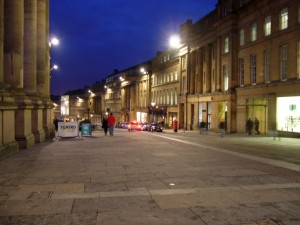



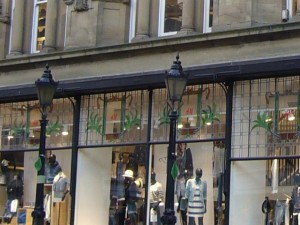
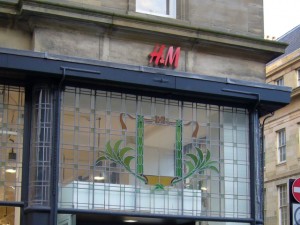

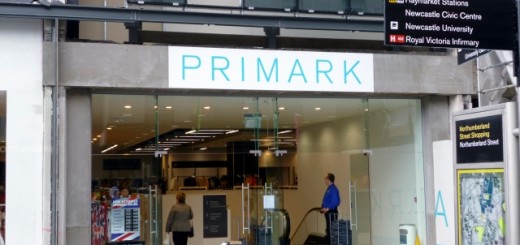





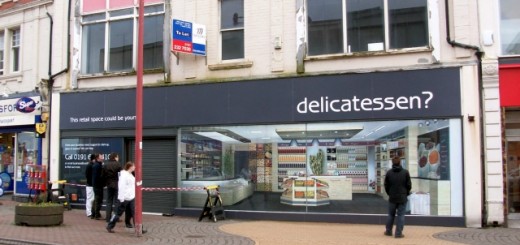

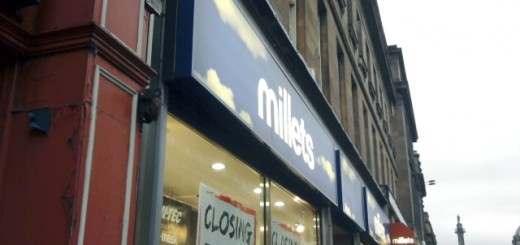
I am looking for retail space near the monument .. could you help with contact details ….
Interesting comments … of course Newcastle quayside is without doubt the most awe inspiring area and is well used by the people of newcastle and tourists alike …. wonderful city with much to be proud of
Thanks
Louise
I’ve never noticed the missing logos before but that H&M is one of my favourite stores in the city. A really nice building from the outside and inside is really sympathetic to the existing architecture.